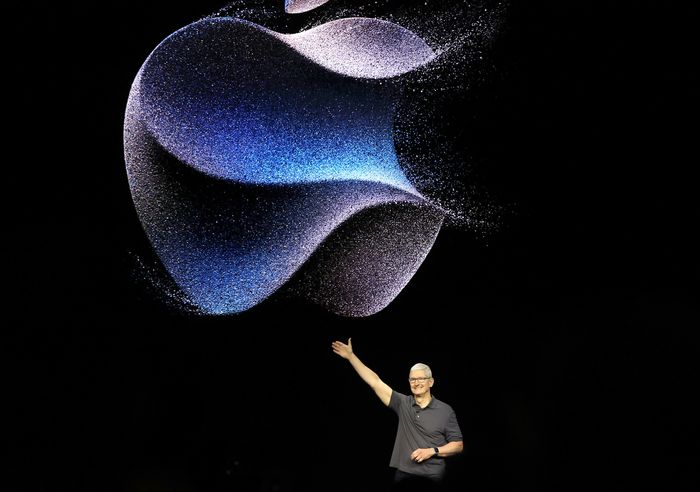New smartphones, Apple Watch lineup and a switch to USB-C were included in Apple’s annual September launch event

Apple refreshed its iPhone and Apple Watch lineups at a Tuesday event that focused on camera and processing improvements for the phones as well as new gesture controls for the watch.
Apple kept prices the same on three of its iPhone models, while boosting the starting price of the iPhone 15 Pro Max for the first time when it eliminated what previously was the smallest and cheapest configuration. The least expensive iPhone 15 Pro Max will cost $1,199 for 256GB of storage, which is what that configuration cost a year ago, though at that time there was also a cheaper 128GB option. Apple previously had stuck with a $1,099 base price on the iPhone Pro Max since it rolled out that model in 2019.
Both the iPhone 15 Pro and the iPhone 15 Pro Max will feature Apple’s custom designed A17 Pro processor, a faster chip that the company says will boost the mobile gaming experience.
The Pro models are getting slight design enhancements, including new titanium casing and slimmer edges. Apple says that the use of titanium, rather than stainless steel, makes the models lighter than their predecessor.
Perhaps the best camera upgrade is exclusive to the Pro Max. That phone will have a better telephoto camera supporting up to five-times zoom, compared with three times before, and will be able to capture three-dimensional video that can be viewed with Apple’s soon-to-launch Vision Pro headset.
The iPhone 15 and iPhone 15 Plus will receive enhancements, too, including speed boosts via Apple’s A16 processor and camera upgrades that will support better use of portrait mode. The satellite connectivity feature that launched on last year’s iPhones will expand to include roadside assistance as well.
After facing criticism for the iPhone’s “notch,” Apple turned that space into a Dynamic Island on Pro models last year. Now that technology is coming to the base-level models as well, so users will be able to use that space for more functional means like changing songs.
iPhone users may be able to throw away their Lightning cables if they get the new models, as all four will charge with the more universal USB-C connectivity, as will other Apple devices such as AirPods Pro. Apple did not spend a lot of time addressing the change from its proprietary “Lightning” connecter, which was forced by new European rules requiring universal connections.
Apple also detailed the new Apple Watch Series 9 lineup, which includes the second version of the Apple Watch Ultra. The new base Apple Watches will have a new S9 chip that could lead to speed and efficiency improvements and faster load times, the same 18-hour battery life, a new FineWoven fabric band and up to 2000 nit brightness display. The Apple Watch Ultra 2 has features including 36 hours of battery life, an S9 SiP chip, and a 3000-nit brightness display
The new Apple Watch Series 9 also features a new “double-tap” gesture, which allows people to answer calls and interact with their watch by tapping their index finger and thumb together when their non-watch hand is being previously occupied.
The new Apple Watch models are set to become available for preorder immediately following the Sept. 12 launch event, and will be available for regular purchase on Friday Sept. 22.
Apple said the new Apple Watch would be its first fully carbon-neutral device, and dedicated a solid chunk of its hour-and-a-half presentation to discussing environmental sustainability efforts. The company is aiming to be completely carbon-neutral across its operations and supplier operations by 2030.
Apple also noted that it will no longer use leather in Watch bands, nor any other product. The company also moved up its goal for ditching all plastic packaging — it now expects to accomplish that by the end of 2024.
Apple added new pink colors to its iPhone and Watch lineup as well. The company also added two new tiers to its iCloud product, which will offer options for 6 and 12 terabytes of remote storage after previously topping out at 2 terabytes.
Apple stock declined during and after the event, ending the day’s session with a 1.7% drop at $176.30 that helped push the Dow Jones Industrial Average DJIA to a slight daily decline. That’s a larger decline than Apple’s average daily performance on iPhone event days historically, but the past has also shown that shares typically rise between the September announcement and the actual launch of the phones.
Apple’s stock has increased 35.7% so far this year, easily outpacing the 16.9% increase of the S&P 500 index.
Comments